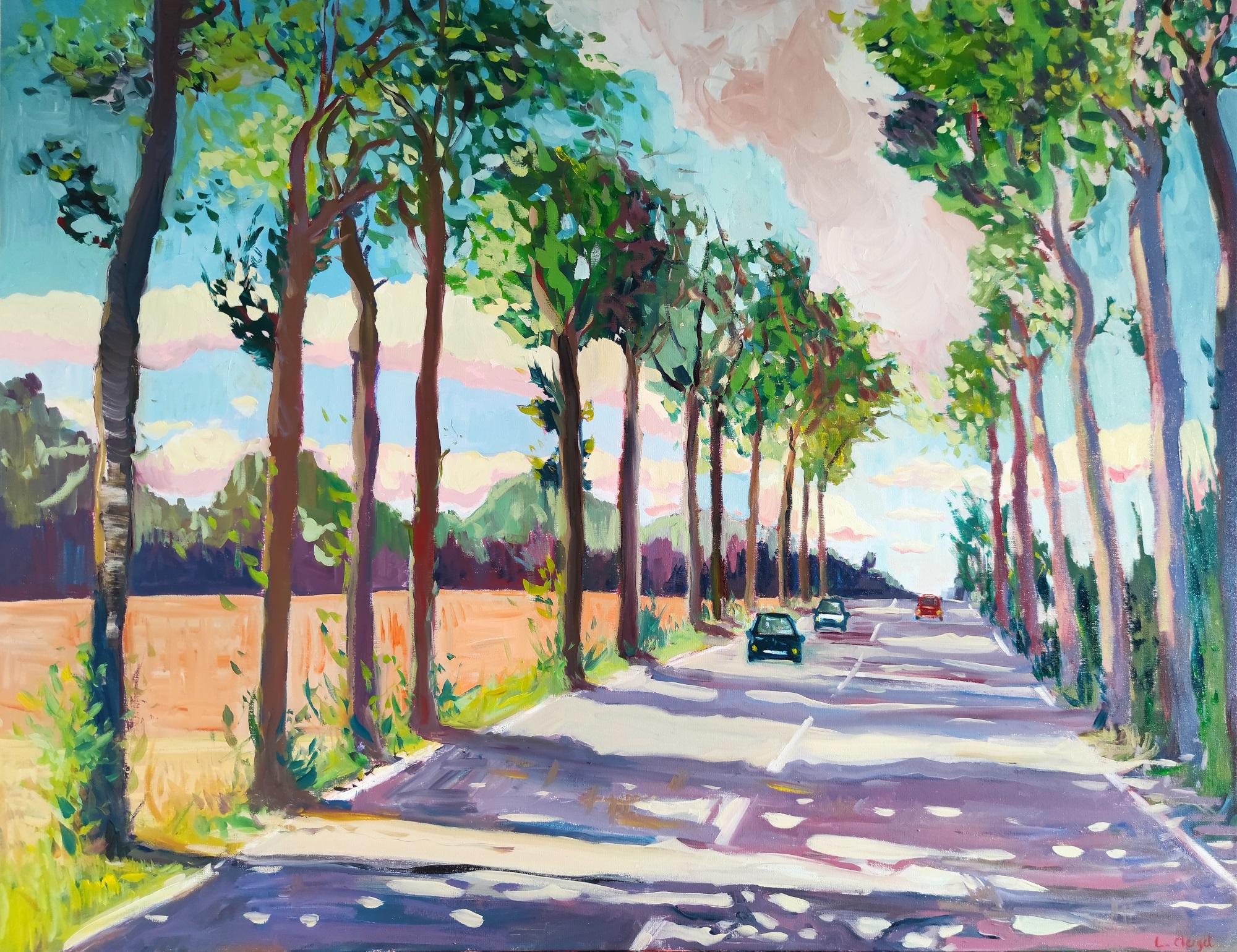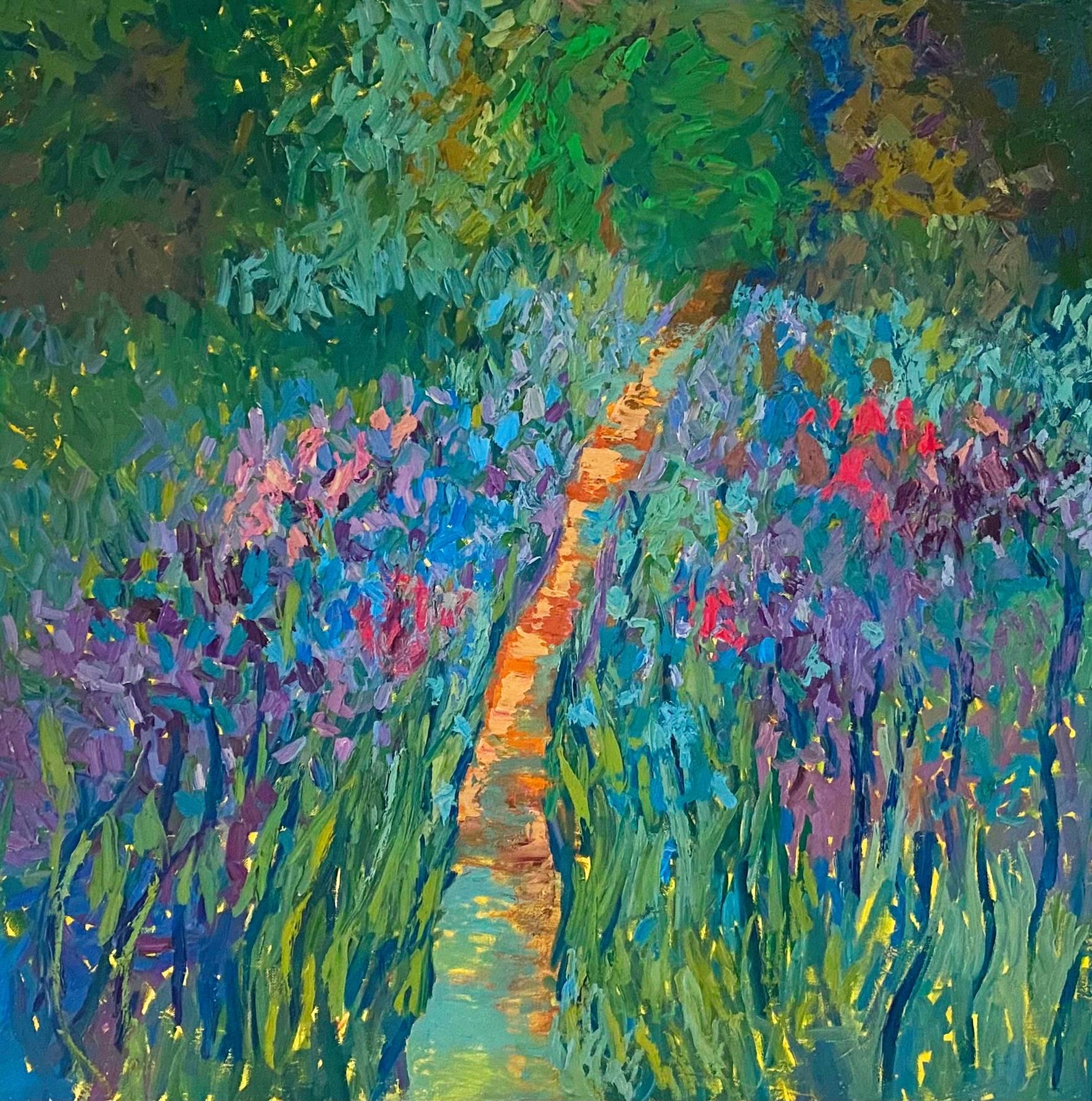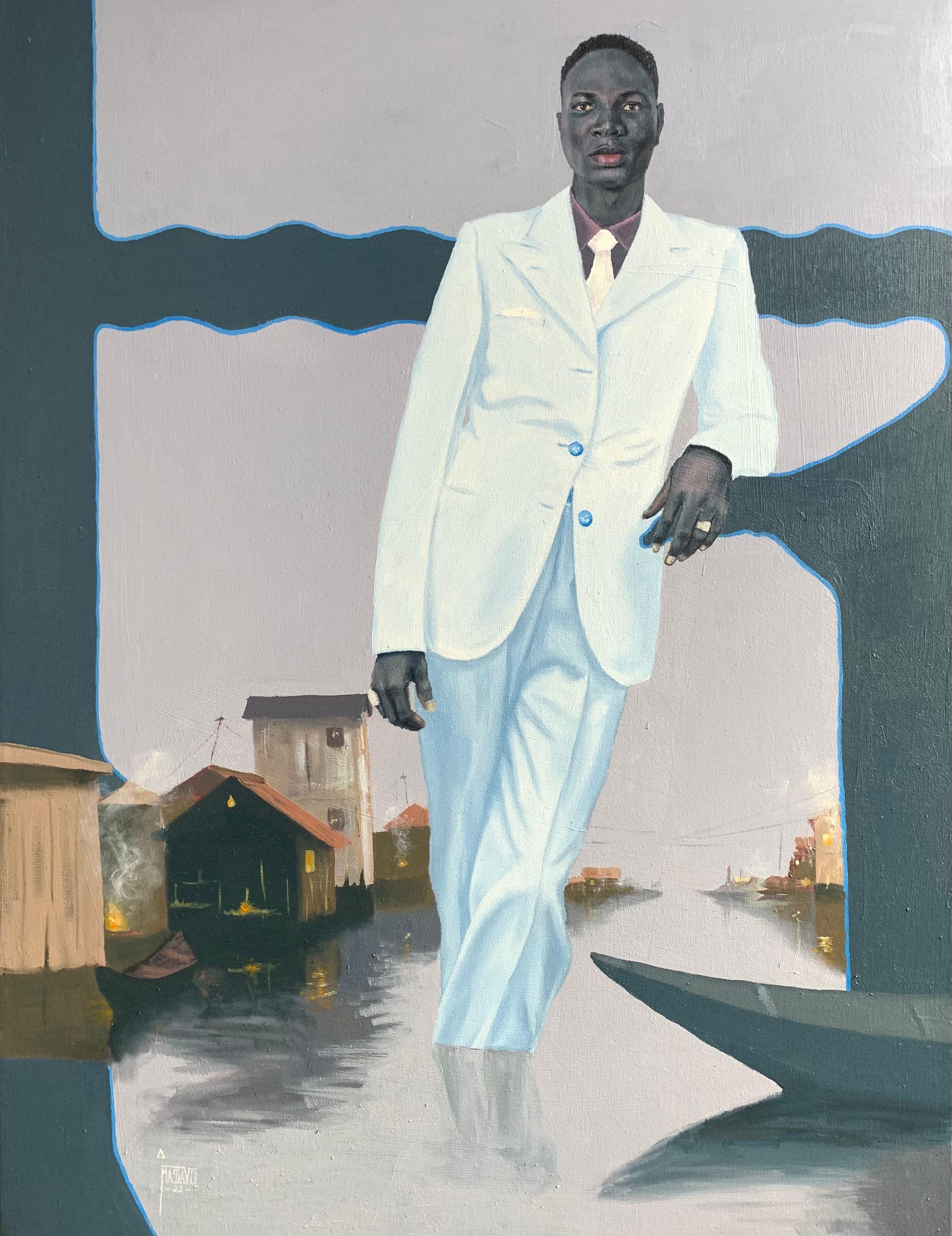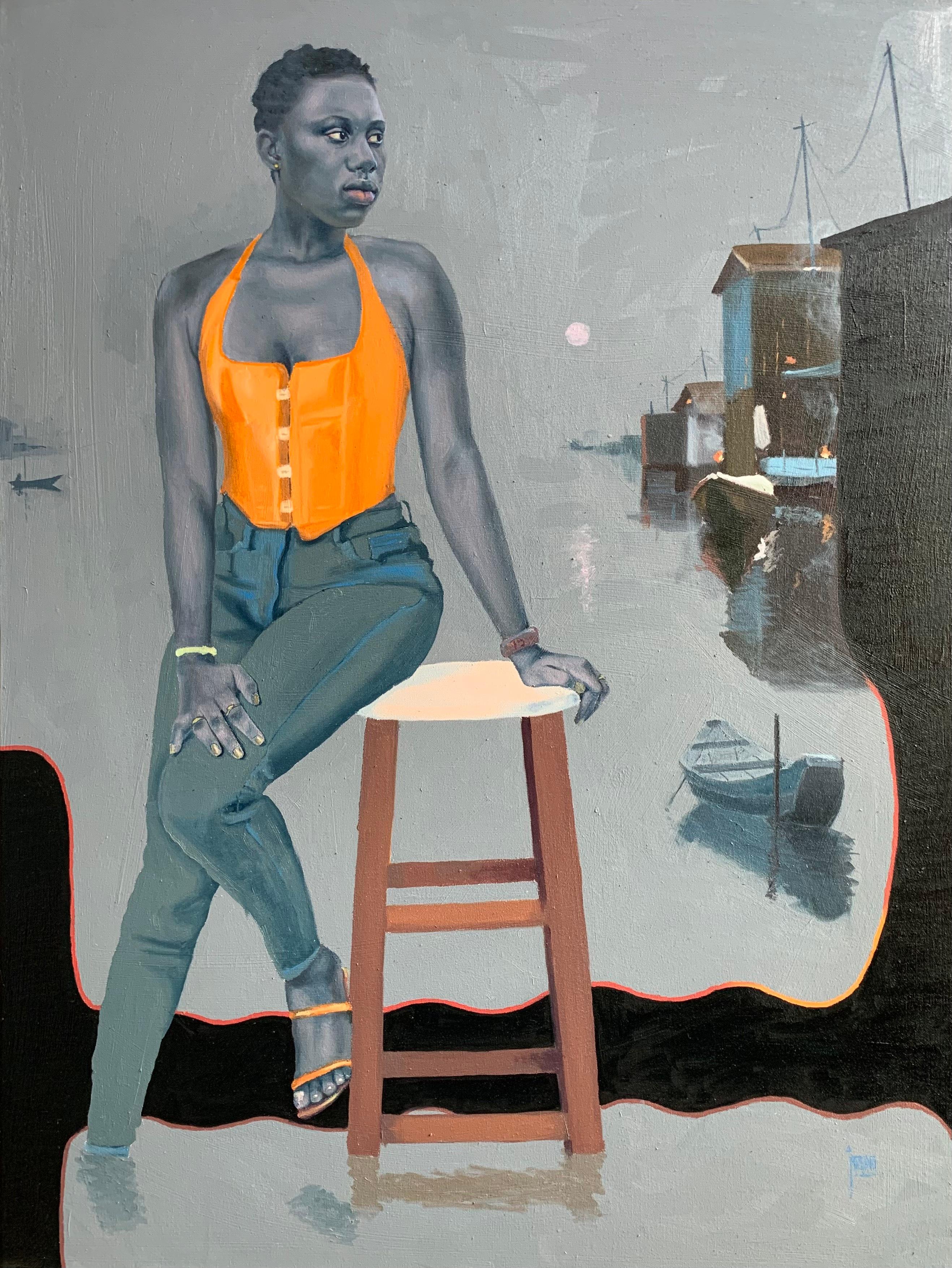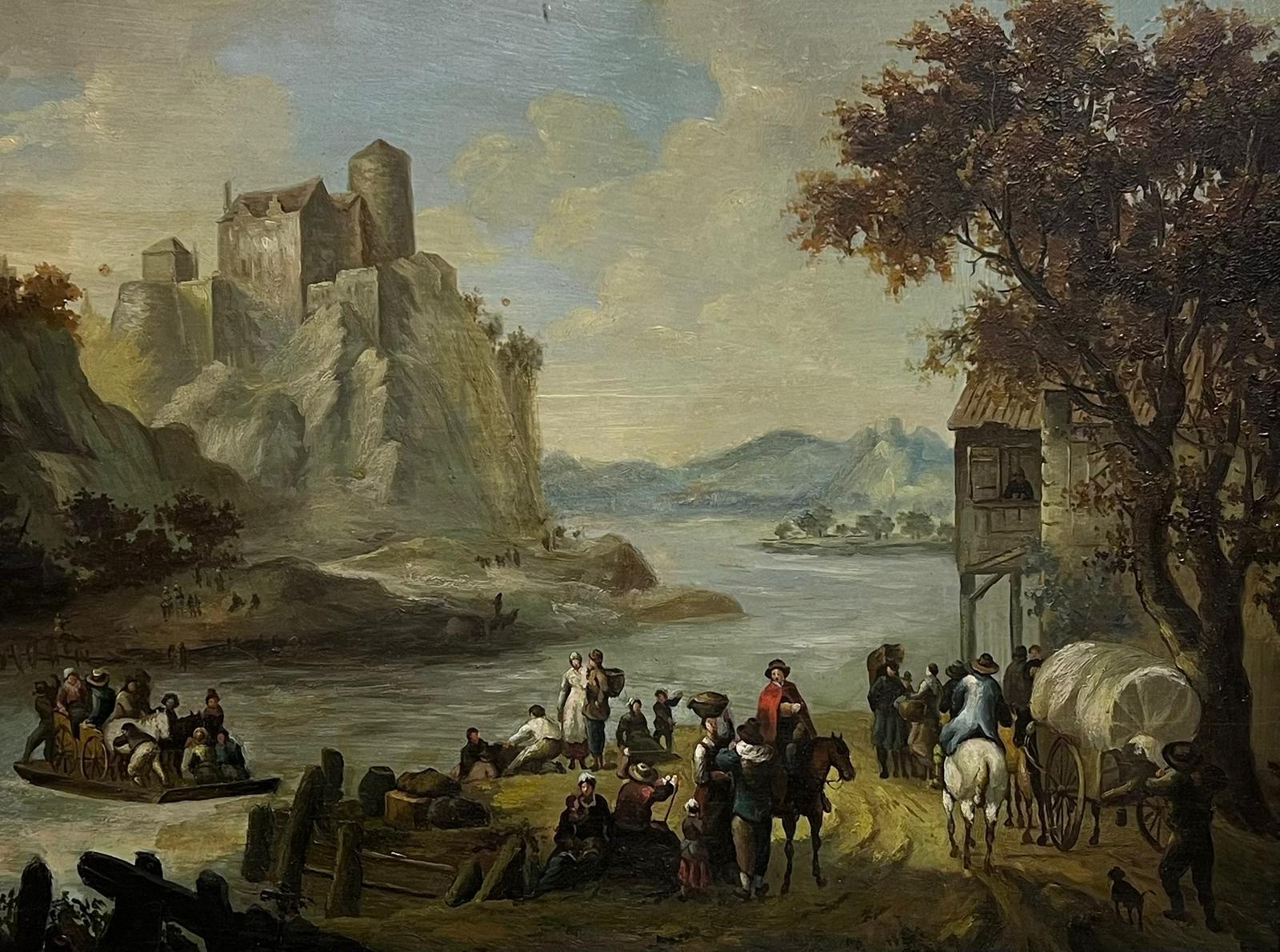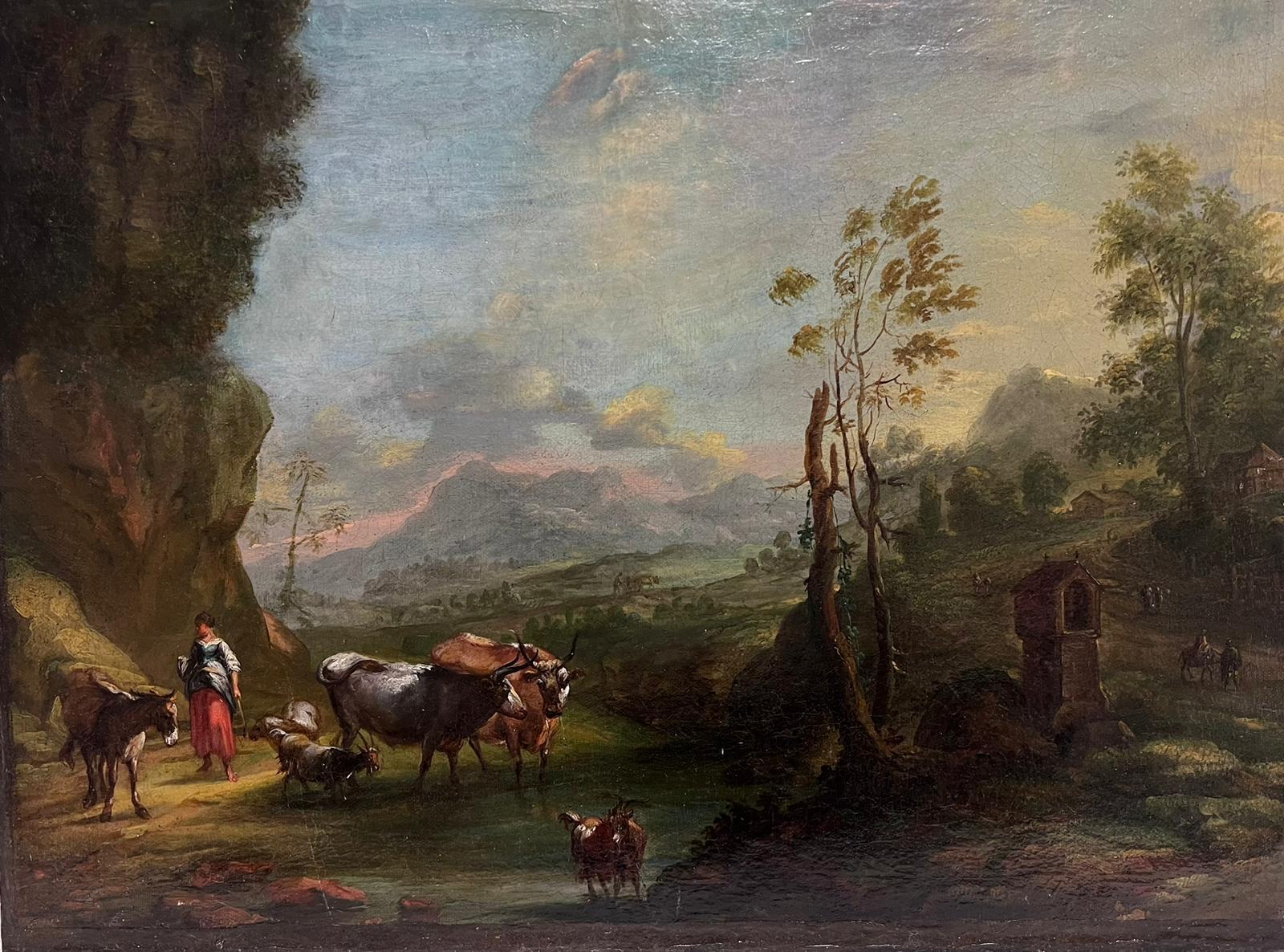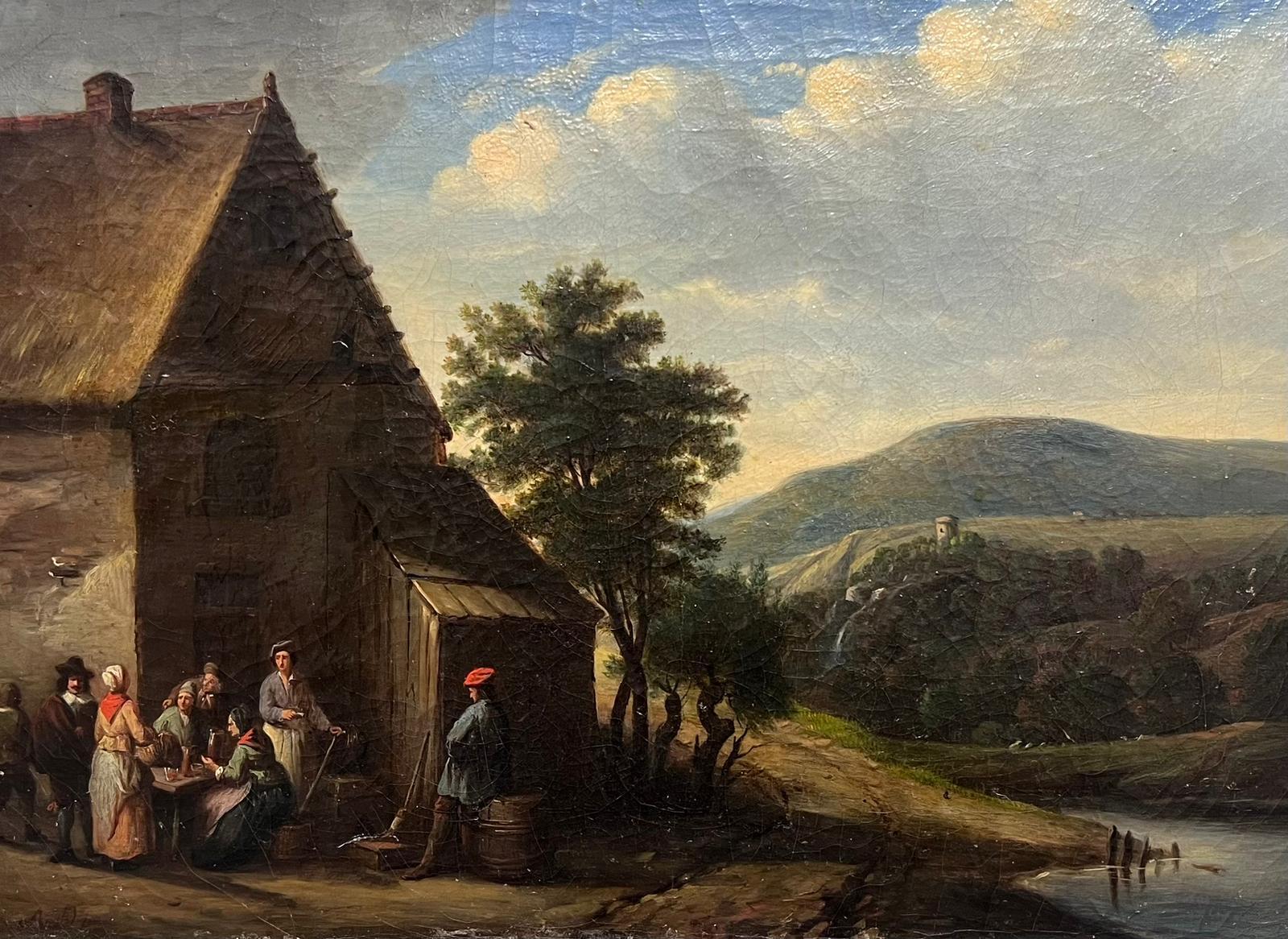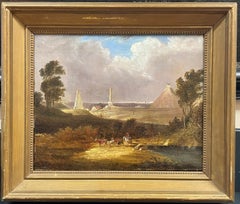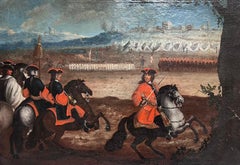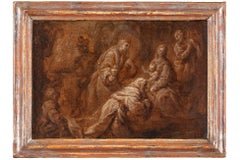
1830's French Oil Romantic Classical Sunset Landscape Ancient Ruins Lake Figures
View Similar Items
Want more images or videos?
Request additional images or videos from the seller
1 of 10
Auction endedBrowse Current Auctions
French School1830's French Oil Romantic Classical Sunset Landscape Ancient Ruins Lake Figures1830's
1830's
About the Item
- Creator:French School
- Creation Year:1830's
- Dimensions:Height: 24 in (60.96 cm)Width: 21.5 in (54.61 cm)Depth: 1 in (2.54 cm)
- Medium:
- Movement & Style:
- Period:
- Condition:
- Gallery Location:Cirencester, GB
- Reference Number:1stDibs: LU509311942042

About the Seller
5.0
Platinum Seller
These expertly vetted sellers are 1stDibs' most experienced sellers and are rated highest by our customers.
Established in 1989
1stDibs seller since 2016
3,428 sales on 1stDibs
Typical response time: 2 hours
More From This SellerView All
- Early 1800's English Oil Painting Figure in Rural Woodland Landscape, originalBy circle of John ConstableLocated in Cirencester, GloucestershireArtist: English School, early 1800's, circle of John Constable (British 1776-1837) Title: The Woodland Path Medium: oil on canvas, framed Size: 12 x 22 inches Picture: 9 x 18 inches Provence: from a private collection in East Anglia...Category
Early 19th Century Old Masters Landscape Paintings
MaterialsCanvas, Oil
- Waterloo Battlefield with 3 Monuments - Butte du Lion, Antique Oil PaintingLocated in Cirencester, GloucestershireThe Battlefield of Waterloo English School, 19th century original oil painting on canvas, framed canvas: 12 x 15.5 inches framed: 17.5 x 20.5 inches condition: overall very good and presentable, some former restoration and signs of retouching visible. provenance: from a private collection A very rare and historically important early painting, depicting the Waterloo battle...Category
Early 19th Century Old Masters Landscape Paintings
MaterialsCanvas, Oil
- 18th Century Cavalry Military Battle Encampment Soldiers on Horseback French OilLocated in Cirencester, GloucestershireThe Military Encampment French Old Master, circa 1700 oil on canvas, framed framed: 20 x 27 inches canvas: 17.5 x 24 inches provenance: private collection, France condition: very goo...Category
Early 1700s Old Masters Figurative Paintings
MaterialsCanvas, Oil
- Fishing at Dawn Old Trading Port with Many Figures Large Oil PaintingLocated in Cirencester, GloucestershireFishing at Dawn English artist after an earlier work (see inscription verso) signed oil painting on canvas, framed inscribed verso framed: 23 x 31 inches canvas: 18 x 26inches proven...Category
Late 20th Century Old Masters Landscape Paintings
MaterialsCanvas, Oil
- Figures in Winter Dutch Snow Landscape Large 19th Century Oil on Canvas PaintingLocated in Cirencester, GloucestershireThe Winter Landscape Dutch School, 19th century oil painting on canvas, framed framed: 22 x 28 inches canvas: 16.5 x 23 inches provenance: private collection, UK condition: very goo...Category
19th Century Old Masters Landscape Paintings
MaterialsCanvas, Oil
- Large 18th Century British Old Master Oil Painting Figures at Dusk in WoodlandLocated in Cirencester, GloucestershireThe Close of Day English artist, second half 18th century circle of Thomas Gainsborough (British 1727-1788) oil on canvas, unframed canvas: 24.5 x 29 inches provenance: private colle...Category
18th Century Old Masters Landscape Paintings
MaterialsOil, Canvas
You May Also Like
- 17th Century by Simone Cantarini Adoration of The Magi Painting Oil on CanvasLocated in Milano, LombardiaSimone Cantarini (Pesaro 1612 - Verona 1648) Adoration of the Magi Oil on paper applied to canvas, cm. 16,5 x 24 – with frame cm. 22 x 29 Antique sh...Category
Early 17th Century Old Masters Figurative Paintings
MaterialsCanvas, Cotton Canvas, Oil
- Two countrywomen with a donkey - Melancholy in an atmosphere of colour -Located in Berlin, DEPierre Louis De La Rive (1753 Geneva - 1817 Geneva). Two countrywomen with a donkey. Oil on canvas, mounted, 27 x 20 cm (visible size), 37 x 31 (frame), monogrammed "P.R." at lower right. About the artwork De La Rive has taken the typical scenes of Dutch landscape genre paintings...Category
1790s Old Masters Figurative Paintings
MaterialsCanvas, Oil
$2,956 Sale Price20% OffFree Shipping - Landscape Near Felday, SurreyBy Abraham Hulk the YoungerLocated in Hillsborough, NCDutch/English artist Abraham Hulk the Younger (1851-1922) is most known for landscapes of the British countryside. This work is one of a pair (the second work is also available by s...Category
Late 19th Century Old Masters Landscape Paintings
MaterialsOil, Canvas
- A 17th c. Italian school, Capriccio with the Colosseum, circle of V. CodazziLocated in PARIS, FRA capriccio with the Colosseum in Roma 17th century Italian school Circle of Viviano Codazzi (1604-1670) Oil on canvas Dimensions: h. 35.43 in, w. 51.18 in Modern 17th century style ...Category
17th Century Old Masters Landscape Paintings
MaterialsCanvas, Oil
- Huge 17th century old master - The feast of Bacchus - celebration PoussinLocated in Antwerp, BEHuge 17th century Old Master painting "Bacchus celebration" attributed to Niccolo de Simone The Bacchus celebration, also known as Bacchanalia, was...Category
17th Century Old Masters Figurative Paintings
MaterialsCanvas, Oil
- Shipping in Stormy Waters, Attributed to Italian Artist Francesco GuardiBy Francesco GuardiLocated in Stockholm, SEThe splendour of the tragic sea Francesco Guardi and maritime painting in Venetian art No Venetian painter was a stranger to the sea. After all, Venice was not only one of the most prominent ports of the Mediterranean, but indeed a city literally submerged in the ocean from time to time. Curiously however, the famous Venetian school of painting showed little interest in maritime motifs, favouring scenes from the iconic architecture of the city rather than seascapes. That is why this painting is a particularly interesting window into not only the painter Francesco Guardi himself – but to the significance of the element of water in art history, in absence as well as in the centre of attention. Whether it be calm, sunny days with stunning views of the palaces alongside the canals of Venice or – more rarely – stormy shipwrecking tragedies at sea, water as a unifying element is integral to the works of painter Francesco Guardi (1712–1793). During his lifetime, Venetian art saw many of its greatest triumphs with names like Tiepolo or Canaletto gaining international recognition and firmly establishing Venice as one of the most vibrant artistic communities of Europe. While the city itself already in the 18th century was something of an early tourist spot where aristocrats and high society visited on their grand tour or travels, the artists too contributed to the fame and their work spread the image of Venice as the city of romance and leisure to an international audience, many of whom could never visit in person. Still today, the iconic image of Venice with its whimsical array of palaces, churches and other historic buildings is much influenced by these artists, many of whom have stood the test of time like very well and remain some of the most beloved in all of art history. It was not primarily subtility, intellectual meanings or moral ideals that the Venetian art tried to capture; instead it was the sheer vibrancy of life and the fast-paced city with crumbling palaces and festive people that made this atmosphere so special. Of course, Venice could count painters in most genres among its residents, from portraiture to religious motifs, history painting and much else. Still, it is the Vedutas and views of the city that seems to have etched itself into our memory more than anything else, not least in the tradition of Canaletto who was perhaps the undisputed master of all Venetian painters. Born into his profession, Francesco lived and breathed painting all his life. His father, the painter Domenico Guardi (1678–1716) died when Francesco was just a small child, yet both he and his brothers Niccolò and Gian Antonio continued in their fathers’ footsteps. The Guardi family belonged to the nobility and originated from the mountainous area of Trentino, not far from the Alps. The brothers worked together on more challenging commissions and supported each other in the manner typical of family workshops or networks of artists. Their sister Maria Cecilia married no other than the artist Giovanni Battista Tiepolo himself, linking the family to the most renowned Venetian name of the time. During almost a decade, Guardi worked in the studio of Michele Giovanni Marieschi, sometimes simply known as Michiel, a painted similar in both style and motif. Canaletto is, however, the artist Guardi is most often compared to since they shared a mutual fascination for depicting the architecture and cityscape of Venice. During the course of his career, Guardi tried his hand in many different genres. He was as swift in painting landscapes, Vedutas of Venice, sacred motifs, interiors and architectural compositions as he was in a number of other motifs. His style is typical of the Venetian school but also distinct and personal once we look a little closer. There is an absolute certainty in the composition, the choice of which sometimes feels like that of a carefully calculated photograph – yet it is also very painterly, in the best sense of the word: fluid, bold, sensitive and full of character. The brushwork is rapid, intense, seemingly careless and extraordinarily minute at the same time; fresh and planned in a very enjoyable mixture. His interiors often capture the breath-taking spacious glamour of the palaces and all their exquisite decor. He usually constructed the motif through remarkably simple, almost spontaneous yet intuitively precise strokes and shapes. The result was a festive, high-spirited atmospheric quality, far away from the sterile and exact likeness that other painters fell victim to when trying to copy Canaletto. The painting here has nothing of the city of Venice in it. On the contrary, we seem to be transported far away into the solitary ocean, with no architecture, nothing to hold on to – only the roaring sea and the dangerous cliffs upon which the ships are just moments away from being crushed upon. It is a maritime composition evoking both Flemish and Italian precursors, in the proud tradition of maritime painting that for centuries formed a crucial part of our visual culture. This genre of painting is today curiously overlooked, compared to how esteemed and meaningful it was when our relationship to the sea was far more natural than it is today. When both people and goods travelled by water, and many nations and cities – Venice among them – depended entirely on sea fare, the existential connection to the ocean was much more natural and integrated into the imagination. The schools and traditions of maritime art are as manifold as there are countries connected to the sea, and all reflect the need to process the dangers and wonders of the ocean. It could symbolize opportunity, the exciting prospects of a new countries and adventures, prospering trade, beautiful scenery as well as war and tragedy, loss of life, danger and doom. To say that water is ambivalent in nature is an understatement, and these many layers were something that artists explored in the most wondrous ways. Perhaps it takes a bit more time for the modern eye to identify the different nuances and qualities of historic maritime paintings, they may on first impression seem hard to differentiate from each other. But when allowing these motifs to unfold and tell stories of the sea in both fiction and reality – or somewhere in between – we are awarded with an understanding of how the oceans truly built our world. In Guardi’s interpretation, we see an almost theatrically arranged shipwrecking scene. No less than five ships are depicted right in the moment of utter disaster. Caught in a violent storm, the waves have driven them to a shore of sharp cliffs and if not swallowed by the waves, crushing against the cliffs seems to be the only outcome. The large wooden ships are impressively decorated with elaborate sculpture, and in fact relics already during Guardi’s lifetime. They are in fact typical of Dutch and Flemish 17th century ships, giving us a clue to where he got the inspiration from. Guardi must have seen examples of Flemish maritime art, that made him curious about these particular motifs. One is reminded of Flemish painters like Willem van de Velde and Ludolf Backhuysen, and this very painting has indeed been mistakenly attributed to Matthieu van Plattenberg...Category
18th Century Old Masters Landscape Paintings
MaterialsCanvas, Oil
$51,087 Sale Price20% OffFree Shipping
Recently Viewed
View AllMore Ways To Browse
Antique In France
Antique In French
19th French Oil
French 19th Century Oil
French Romantic
Ancient France
Ancient French
French Antique Figures
French Old Master
Ancient Classical
Oil Lake Landscape
19th Century French School
French 19th Century Masters
Antique Ruins
French 19th Century Landscape Oil Paintings
Classical Oil Landscape
Classical Landscape Oil Painting
19th Century French School Paint
